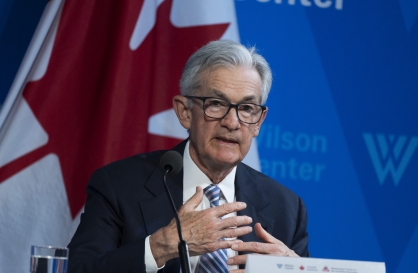Women on low incomes are more likely to be obese, while the opposite is true for men, according to a statistical report by the Korean Ministry of Health and Welfare.
In a report titled “2010 National Health Statistics,” the ministry classified 8,000 people into four groups based on their monthly income.
The relationship between income and obesity rates were opposite for men and women. Men’s obesity rate went up in high-income groups -- 41.0 percent compared to 31.8 percent for their low-income counterparts. However, women had higher obesity rates in low-income groups with 28.9 percent, while the high-income group’s obesity stood at 23.2 percent.
The percentage of energy intake differed among groups based on their income. The percentage of “the undernourished,” who take in less than 75 percent of nutrients they need, was 13.2 percent in the low-income group, about two times larger than that of the high-income counterpart.
By contrast, the proportion of “the over-nourished,” who intake more than 125 percent of their nutritional requirements and fat, was 7.4 percent in the high-income earners. The figure for the low-income group was 5.7 percent.
The Korea Centers for Disease Control and Prevention said that “higher incomes give advantages in daily workout and dietary control, but men seem to have less time to fulfill them because of the societal structure.”
<관련 한글 기사>
소득 높은 남자는 비만이라는데...나는 왜?
보건복지부에 의하면, 여성은 소득이 낮을수록, 남성은 소득이 높을수록 높은 비만율이 나타나는 것으로 밝혀졌다.
보건복지부는 8천 명의 대상을 월소득을 기준으로 네 개의 그룹으로 나누어 조사하여, “2010 국민건강통계”를 작성했다.
소득과 비만율의 관계는 성별에 따라 상반된 결과가 나왔다. 남성은 소득 상위층은 41.0%의 비만율을 보여 31.8%가 나온 하위층보다 높았다. 하지만 여성은 소득 상위층이 23.2%의 비만율을 보여 28.9%의 하위층보다 낮았다.
에너시 섭취량도 소득에 따라 차이를 보였다. 필요한 에너지의 75% 이하를 섭취하는 “영양섭취 부족자”는 하위 소득층에서 13.2%를 차지했고, 이는 상위 소득층 비율의 두 배 정도였다.
반면 필요한 에너지와 지방의 125% 이상을 섭취하는 “에너지 지방 과잉 섭취자”는 소득 상위층에서 차지하는 비율이 7.4%로 하위층에 비해 1.7% 많았다.
국민건강 통계를 주도한 질병관리본부는 “소득이 많아지면 신체활동이나 식사 등을 조절할 경제적 여유가 더 늘어나지만, 남성의 경우 우리 사회구조상 여성에 비해 조절에 필요한 시간적 여유 등이 부족한 것으로 추정된다”고 말했다.
In a report titled “2010 National Health Statistics,” the ministry classified 8,000 people into four groups based on their monthly income.
The relationship between income and obesity rates were opposite for men and women. Men’s obesity rate went up in high-income groups -- 41.0 percent compared to 31.8 percent for their low-income counterparts. However, women had higher obesity rates in low-income groups with 28.9 percent, while the high-income group’s obesity stood at 23.2 percent.
The percentage of energy intake differed among groups based on their income. The percentage of “the undernourished,” who take in less than 75 percent of nutrients they need, was 13.2 percent in the low-income group, about two times larger than that of the high-income counterpart.
By contrast, the proportion of “the over-nourished,” who intake more than 125 percent of their nutritional requirements and fat, was 7.4 percent in the high-income earners. The figure for the low-income group was 5.7 percent.
The Korea Centers for Disease Control and Prevention said that “higher incomes give advantages in daily workout and dietary control, but men seem to have less time to fulfill them because of the societal structure.”
<관련 한글 기사>
소득 높은 남자는 비만이라는데...나는 왜?
보건복지부에 의하면, 여성은 소득이 낮을수록, 남성은 소득이 높을수록 높은 비만율이 나타나는 것으로 밝혀졌다.
보건복지부는 8천 명의 대상을 월소득을 기준으로 네 개의 그룹으로 나누어 조사하여, “2010 국민건강통계”를 작성했다.
소득과 비만율의 관계는 성별에 따라 상반된 결과가 나왔다. 남성은 소득 상위층은 41.0%의 비만율을 보여 31.8%가 나온 하위층보다 높았다. 하지만 여성은 소득 상위층이 23.2%의 비만율을 보여 28.9%의 하위층보다 낮았다.
에너시 섭취량도 소득에 따라 차이를 보였다. 필요한 에너지의 75% 이하를 섭취하는 “영양섭취 부족자”는 하위 소득층에서 13.2%를 차지했고, 이는 상위 소득층 비율의 두 배 정도였다.
반면 필요한 에너지와 지방의 125% 이상을 섭취하는 “에너지 지방 과잉 섭취자”는 소득 상위층에서 차지하는 비율이 7.4%로 하위층에 비해 1.7% 많았다.
국민건강 통계를 주도한 질병관리본부는 “소득이 많아지면 신체활동이나 식사 등을 조절할 경제적 여유가 더 늘어나지만, 남성의 경우 우리 사회구조상 여성에 비해 조절에 필요한 시간적 여유 등이 부족한 것으로 추정된다”고 말했다.
-
Articles by Korea Herald










![[Today’s K-pop] BTS pop-up event to come to Seoul](http://res.heraldm.com/phpwas/restmb_idxmake.php?idx=644&simg=/content/image/2024/04/17/20240417050734_0.jpg&u=)
![[Graphic News] More Koreans say they plan long-distance trips this year](http://res.heraldm.com/phpwas/restmb_idxmake.php?idx=644&simg=/content/image/2024/04/17/20240417050828_0.gif&u=)






![[KH Explains] Hyundai's full hybrid edge to pay off amid slow transition to pure EVs](http://res.heraldm.com/phpwas/restmb_idxmake.php?idx=652&simg=/content/image/2024/04/18/20240418050645_0.jpg&u=20240419100350)

